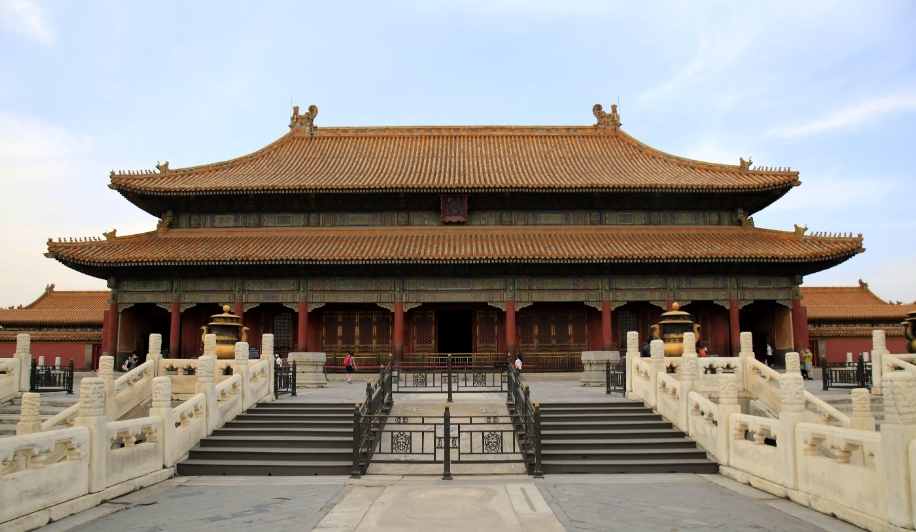
The Heart of Imperial Power: Unveiling the Qianqing Palace
Nestled within the Forbidden City, the Qianqing Palace (乾清宫), meaning "Palace of Heavenly Purity," stands as a potent symbol of imperial power and the epicenter of Chinese governance for over two centuries. This grand hall served as the principal residence and nerve center for emperors during the Ming and early Qing dynasties, a place where the "Son of Heaven" navigated the delicate balance between earthly rule and celestial mandate.
A Palace Fit for an Emperor: Living Quarters and Seat of Power
Far more than just a lavish dwelling, the Qianqing Palace was where the emperor's private life intertwined with the affairs of state. It was here that:
- The Emperor Slept: Behind intricately carved screens and within luxuriously appointed chambers, the emperor sought respite from the burdens of rule.
- The Emperor Worked: The palace housed the emperor's private study, where he reviewed memorials, granted audiences to high-ranking officials, and issued decrees that reverberated throughout the empire. This blending of personal and political spaces underscored the emperor's absolute authority, shaping every aspect of life within the Forbidden City and beyond.
Architectural Splendor Reflecting Imperial Majesty
The Qianqing Palace's architecture is a testament to the grandeur befitting the Son of Heaven. Every element, from its imposing structure to its intricate details, reflects a calculated display of imperial power and celestial harmony.
- Dominating the Inner Court: Situated on a raised platform of white marble, the Qianqing Palace commands a central position within the Inner Court, signifying its paramount importance within the palace complex. This strategic location allowed the emperor to observe court activities and maintain a watchful eye over the inner workings of his vast domain.
- Symbolism in Every Detail: The double-eaved hipped roof, adorned with golden glazed tiles, evokes the emperor's connection to the heavens. Exquisitely carved dragons, symbolic of imperial power, adorn the beams and pillars, serving as constant reminders of the emperor's authority.
Transitioning from Residence to Symbol: The Later Qing Dynasty
With the reign of Emperor Yongzheng in the early 18th century, the Qianqing Palace underwent a significant shift in its function. No longer serving as the emperor's primary living quarters, it transformed into a space of symbolic importance, reserved for:
- Holding Court and Conducting Grand Ceremonies: The hall became the stage for grand ceremonies, including the emperor's birthday celebrations and New Year's Day receptions. Here, amidst elaborate rituals and amidst the empire's elite, the emperor reaffirmed his mandate and reinforced the hierarchical structure of the Qing dynasty.
- Housing the Imperial Succession Edict: Perhaps most intriguingly, the Qianqing Palace became the repository for the emperor's most crucial decree – the edict naming his successor. This document, hidden behind a plaque inscribed with the maxim "Zhengdaguangming" (meaning "upright and impartial"), was only revealed upon the emperor's death, ensuring a smooth transition of power and preventing courtly intrigue.
The Qianqing Palace stands today as a silent witness to centuries of imperial power, intrigue, and the ebb and flow of dynastic rule. Its opulent halls whisper tales of emperors who shaped the destiny of China, making it a captivating destination for anyone seeking to unravel the mysteries of the Middle Kingdom's past.
Q&A
-
Q: What was the primary function of the Qianqing Palace during the Ming and early Qing dynasties? A: It served as the emperor's principal residence and the center of imperial administration, where he both lived and conducted affairs of state.
-
Q: How did the Qianqing Palace's architecture reflect the emperor's status? A: Its central location, elevated platform, double-eaved roof, and intricate dragon carvings all symbolized the emperor's supreme power and connection to the heavens.
-
Q: What significant change occurred in the Qianqing Palace's function during the later Qing dynasty? A: It transitioned from being the emperor's primary living quarters into a symbolic space used for grand ceremonies and as the repository for the crucial imperial succession edict.
note: This return of all, without the author's permission, may not be reproduced